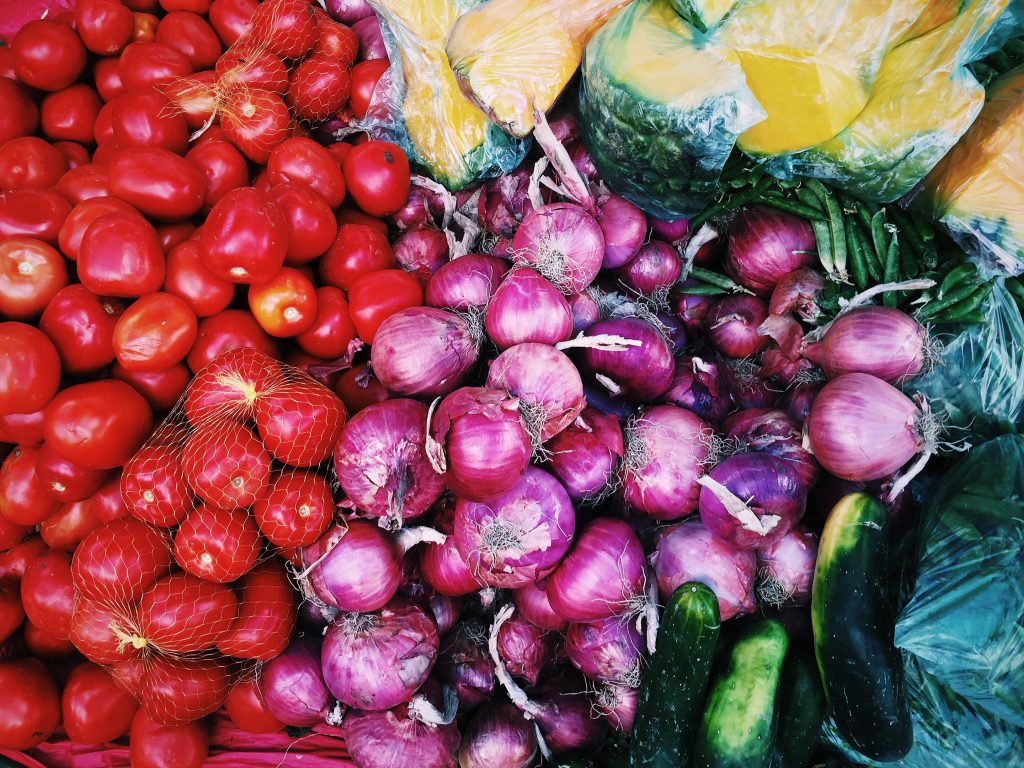Healing with Color

There is no one-size-fits-all when it comes to diet and nutrition. Every person will respond differently to individual foods and food combinations, but there is a universal truth that applies to most people regardless of genetic, environmental, or physical makeup. That universal truth is that a whole food, plant-rich diet made up of an abundance of phytonutrients is healing! Phytonutrients are chemicals naturally produced by plants that help protect against natural threats like germs and bugs. When we eat phytonutrient-rich plants, we benefit from those chemicals which have been associated with reduced risk of diseases including diabetes, heart disease, cancer, and autoimmune conditions. Phytonutrients also stimulate production of enzymes that support detoxification, immune function, and healthy estrogen metabolism. Diet trends will come and go, but incorporating more color into your diet from plants is the foundation of all healthy, disease-preventing eating patterns.
Plants are beautiful, complex, and have natural ways of supporting human physiology as well as the human microbiome. Color communicates healing properties that we can benefit from, but no single plant food provides all the nutrients/phytonutrients you need for optimal health. This is why you should aim to eat a rainbow of color every day. Below, I outlined the unique benefits of each color category along with the best dietary sources, but keep in mind that these foods offer far more benefits than are listed!
Depending on your digestive and metabolic health, you may not be able to tolerate all the foods listed (again, everyone is different), so you will find several examples of each. Experiment to find as many foods as possible and aim to eat at least 1-2 servings of every color every day.
Red/Pink – supports the immune system, adrenal, and prostate health.
Sources: apples, beets, bell peppers, blood oranges, cranberries, cherries, goji berries, grapes, legumes (adzuki beans, lentils), onions, pomegranate, radicchio, raspberries, strawberries, rhubarb, rooibos tea, tomatoes, watermelon, and red radishes.
Orange – protects the eyes, skin, and supports reproductive health.
Sources: apricots, bell peppers, cantaloupe, carrots, mango, nectarine, orange, papaya, persimmon, pumpkin, squash (winter verities), sweet potato, tomato, turmeric, and yams.
Yellow – supports digestion and cardiovascular health.
Sources: Asian pears, banana, bell peppers, cauliflower, non-GMO corn, ginger root, lemon, millet, potatoes, pineapple, starfruit, succotash, summer squash, and tomato.
Green – protects the liver by supporting detoxification.
Sources: apple, artichoke, asparagus, avocado, bean sprouts, bell peppers, bitter melon, broccoli, broccoli sprouts, brussels sprouts, cabbage, celery, cucumber, non-GMO edamame, green beans, herbs (bay leaf, cilantro, dill, parsley, thyme, sage, etc.), kiwi, leafy greens, limes, okra, peas, green tea, olives, pears, snow peas, and zucchini.
Purple/Blue/Black – protects the brain by promoting healthy cognition and memory.
Sources: bell pepper, berries (blue, black, black raspberry, boysenberries, huckleberries, etc.), cabbage, carrots, cauliflower, eggplant, figs, grapes, kale, olives, plums, potatoes, prunes, radishes, raisins, and rice (black, purple).
White/Tan/Brown – anti-cancer and promotes hormonal balance.
Sources: apples/applesauce, bean dips (e.g. hummus), cauliflower, coconut, coffee, dates, garlic, jicama, legumes (chickpeas, lentils, peanuts), mushrooms, nuts (almonds, cashews, walnuts, etc.), onions, pears, potatoes, sauerkraut, seeds (flax, hemp, sesame, etc.), shallots, tahini, tea, whole grains (oat, quinoa, etc.)
Here are several ways to begin adding more color into your day:
- Add colorful toppings to your salad such as watermelon radishes, black olives, avocado, and herbs like chives, dill, and parsley.
- Snack on crunchy vegetables such as cucumber, snap peas, and rainbow bell peppers with hummus for dipping (extra points for beet hummus!).
- Try a variety of apples – Granny Smith, Red Delicious, Pink Lady, Envy, etc. and eat with some almonds or pumpkin seeds.
- Add frozen vegetables such as kale, riced cauliflower, or broccoli to your smoothie.
- Puree pumpkin, butternut squash, or carrots and use as a soup base.
- Make tea with fresh ginger root and squeeze in some lemon juice.
- Use black or purple rice instead of white and serve with a colorful stir-fry made with rainbow carrots, purple cabbage, red onions, mushrooms, and broccoli seasoned with ginger and turmeric.
- Stuffed rainbow bell peppers with a mixture of ground grass-fed meat, tomato, quinoa, black beans, garlic, and herbs/spices.

